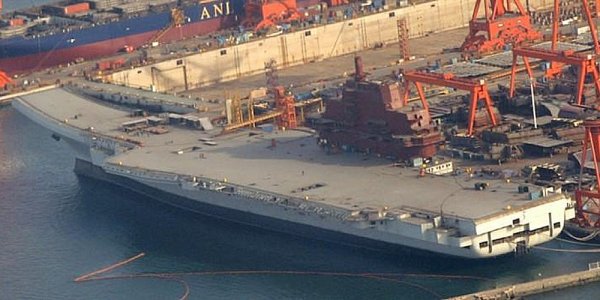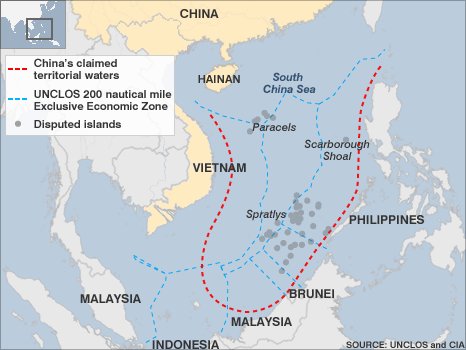The Chinese navy is a bit closer to having an operational aircraft carrier, as the Shi Lang (formerly Varyag in Russian service) is being equipped with radar and weapons:
In the last month, the new Chinese aircraft carrier, the Shi Lang (formerly Varyag) has had several major electronic systems, and its first weapons, installed. The most notable electronic item to show up are the four AESA radar panels. This is a state-of-the-art radar similar to the one used in the American Aegis system. There were a lot of other electronic items being carried into the Shi Lang, indicating that the ship will be equipped with extensive networked computers and communications systems.
The two main weapons were also installed. One was a new version of the older, Type 730 seven barrel, 30mm close-in anti-missile automatic cannon. Operating like the American Phalanx, the new version of the Type 730 seen on the Shi Lang had ten barrels. The other weapon was the FL-3000N anti-missile systems. These are similar to the American RAM anti-missile missile system, except that they come in a 24 missile launcher and are less accurate. FL-3000N was only introduced three years ago, and uses smaller missiles than RAM. The two meter long FL-3000N missiles have a max range of nine kilometers (about half that for very fast incoming missiles). The 120mm, two meter long missiles now use a similar guidance system to RAM, but are not as agile in flight.
[. . .]
The Shi Lang/Varyag is one of the Kuznetsov class carriers that Russia began building in the 1980s. Originally the Kuznetsovs were to be 90,000 ton, nuclear powered ships, similar to American carriers (complete with steam catapults). Instead, because of the high cost, and the complexity of modern (American style) carriers, the Russians were forced to scale back their plans, and ended up with 65,000 ton (full load) ships that lacked steam catapults, and used a ski jump type flight deck instead. Nuclear power was dropped, but the Kuznetsov class was still a formidable design. The 323 meter (thousand foot) long ship normally carries a dozen navalized Su-27s (called Su-33s), 14 Ka-27PL anti-submarine helicopters, two electronic warfare helicopters and two search and rescue helicopters. But the ship was meant to regularly carry 36 Su-33s and sixteen helicopters. The ship carries 2,500 tons of aviation fuel, allowing it to generate 500-1,000 aircraft and helicopter sorties. Crew size is 2,500 (or 3,000 with a full aircraft load.) Only two ships of this class exist; the original Kuznetsov, which is in Russian service, and the Varyag. Like most modern carriers, the only weapons carried are anti-missile systems like Phalanx and FL-3000N, plus some heavy machine-guns (which are often kept inside the ship, and mounted outside only when needed.) However, Russian practice was been to sometimes install long range anti-ship missiles as well. China may also do this with Shi Lang.
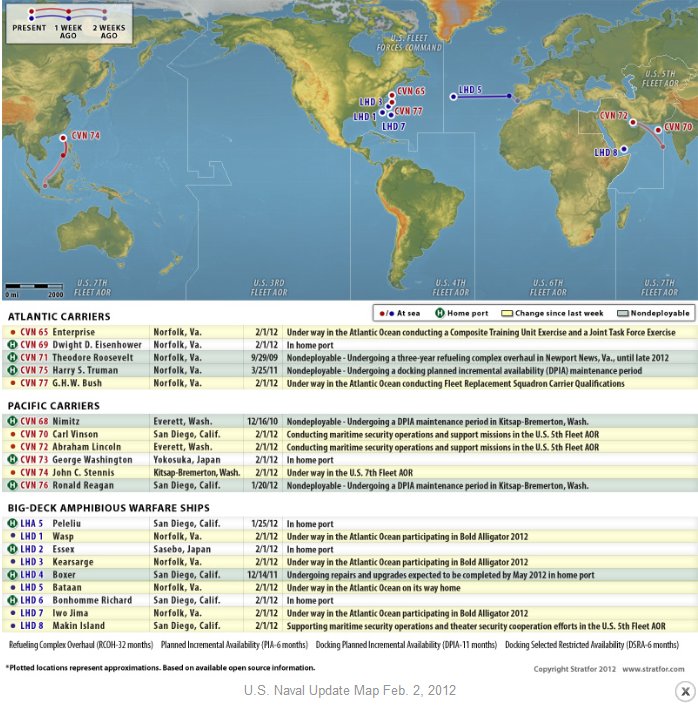

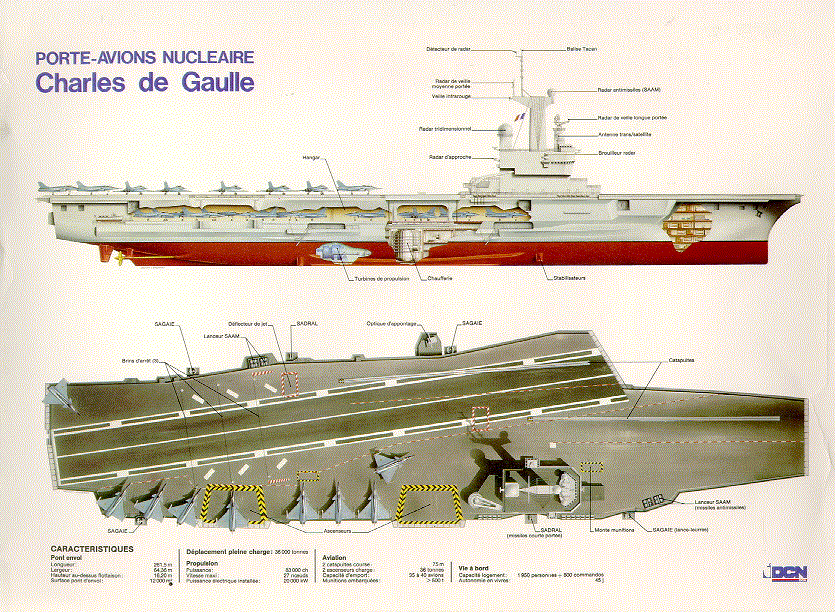
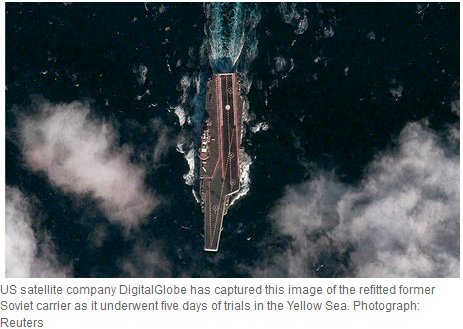 A US satellite company says it has taken a photograph of China’s first aircraft carrier during trials in the Yellow Sea.
A US satellite company says it has taken a photograph of China’s first aircraft carrier during trials in the Yellow Sea.